HPE ProLiant DL380 Gen9 (2017) review
HPE makes the best 2U rack server on the market even better
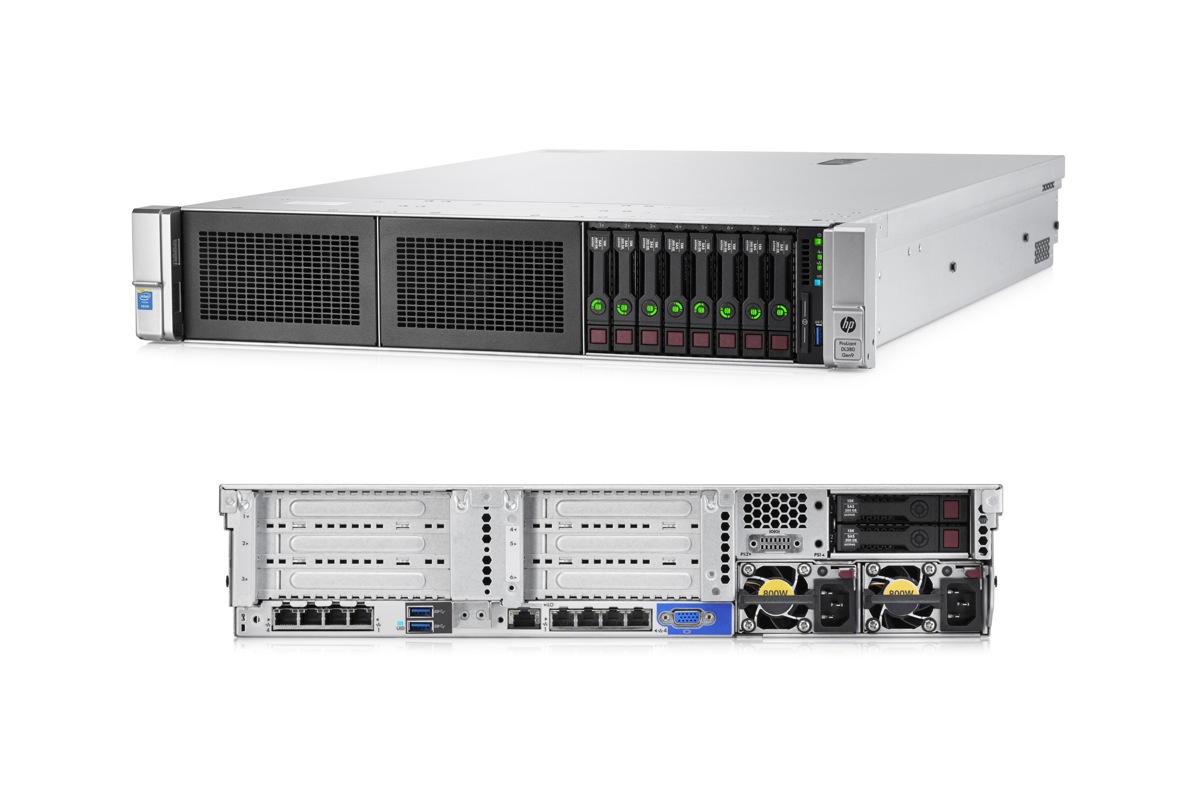

Features, performance, storage options, scalability and management – HPE’s ProLiant DL380 Gen9 has it all and is a great value general purpose server
-
+
Great value; Highly scalable; Masses of new features; Quality management tools; Versatile storage choices
-
-
We can't find any downsides at all

Since its launch in 2014, HPE's ProLiant DL380 Gen9 has set the standard for 2U rack servers and is still the one to beat. HPE hasn't rested on its laurels as it's been constantly updated and in this exclusive review, we bring you an in-depth look at the latest features and hardware options in HPE's flagship server.
Naturally, Xeon E5-2600 v4 CPUs are on the menu and older models with E5-2600 v3 CPUs can be field upgraded. Choices are extensive as the server supports almost the entire E5-2600 v4 family so you can choose from 23 CPUs to suit your workload and budget.
With 128GB LRDIMMs readily available, the server can handle a massive 3TB of memory and with E5-2600 v4 Xeons on board, it also supports HPE's new Persistent Memory NVDIMMs. Aimed at high-demand apps such as databases and analytics, these combine 8GB of high performance DRAM backed up by 8GB of flash in a standard DIMM form factor.
Storage options have been boosted allowing the server to deliver even higher capacities and more power options are also on the table. Server management sees some big changes as along with a revamped iLO4 interface, HPE also provides its OneView infrastructure management software.
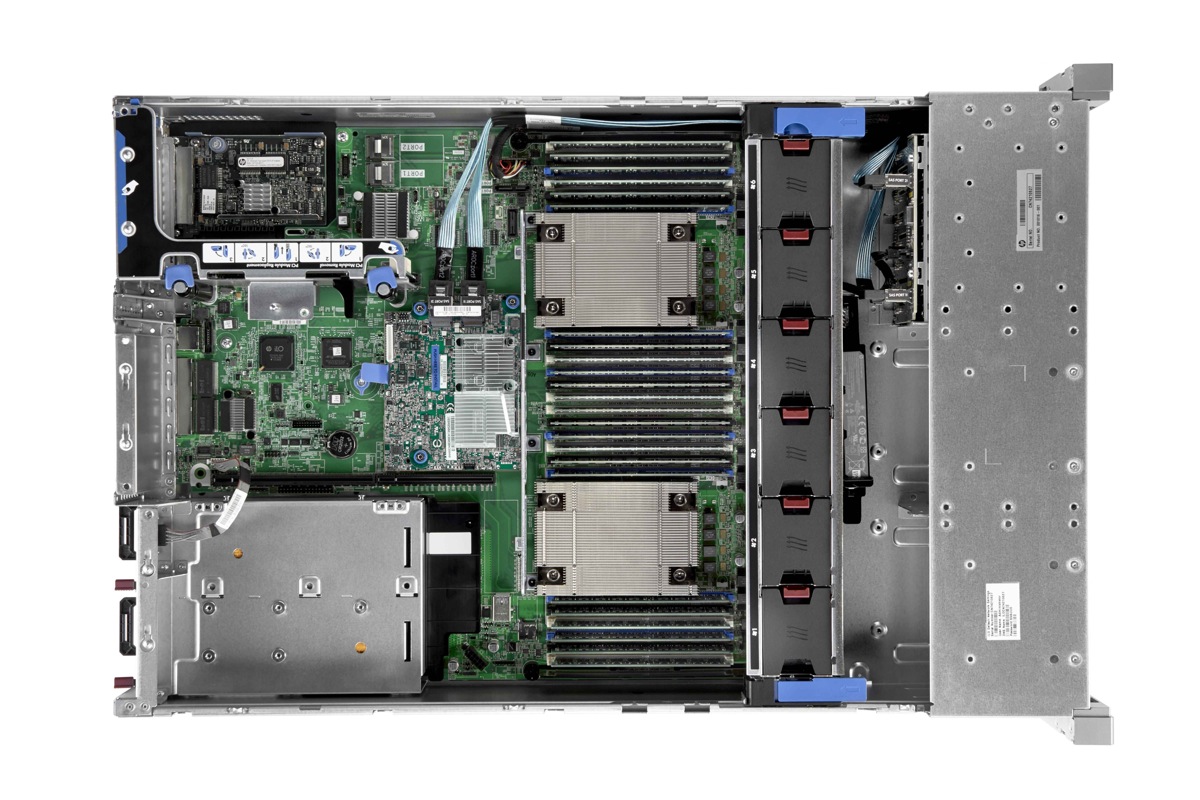
Storage galore
On review we have one of HPE's Base models (826682-B21) which aim to provide SMBs with an affordable entry-point into the DL380 Gen9 family. Costing around 2,199 ex VAT, it's equipped with a 2.1GHz E5-2620 v4 Xeon, 16GB of DDR4 and a single 8-bay SFF hot-plug drive cage.
The front panel uses an 8+8+8 bay configuration that lets you add blocks of 8 SFF hard disks as required. Storage is one area where this server is the most flexible as you can have 24 SFF bays at the front plus two more at the rear.
Opt for 16 SFF drive bays at the front and you can add HPE's Universal Media Bay which has room for an optical drive and provides VGA and USB ports plus two optional SFF drive bays. Other options include four LFF drive bays and enablement kits for up to 12 at the front and three more at the back.
The server comes as standard with HPE's Smart Array P440ar 12Gbps SAS3 RAID controller with 2GB of FBWC cache and battery backup. No need to add more RAID adapters when you increase the drive bay count as you can fit an HPE SAS expander module and link it to the P440ar card.
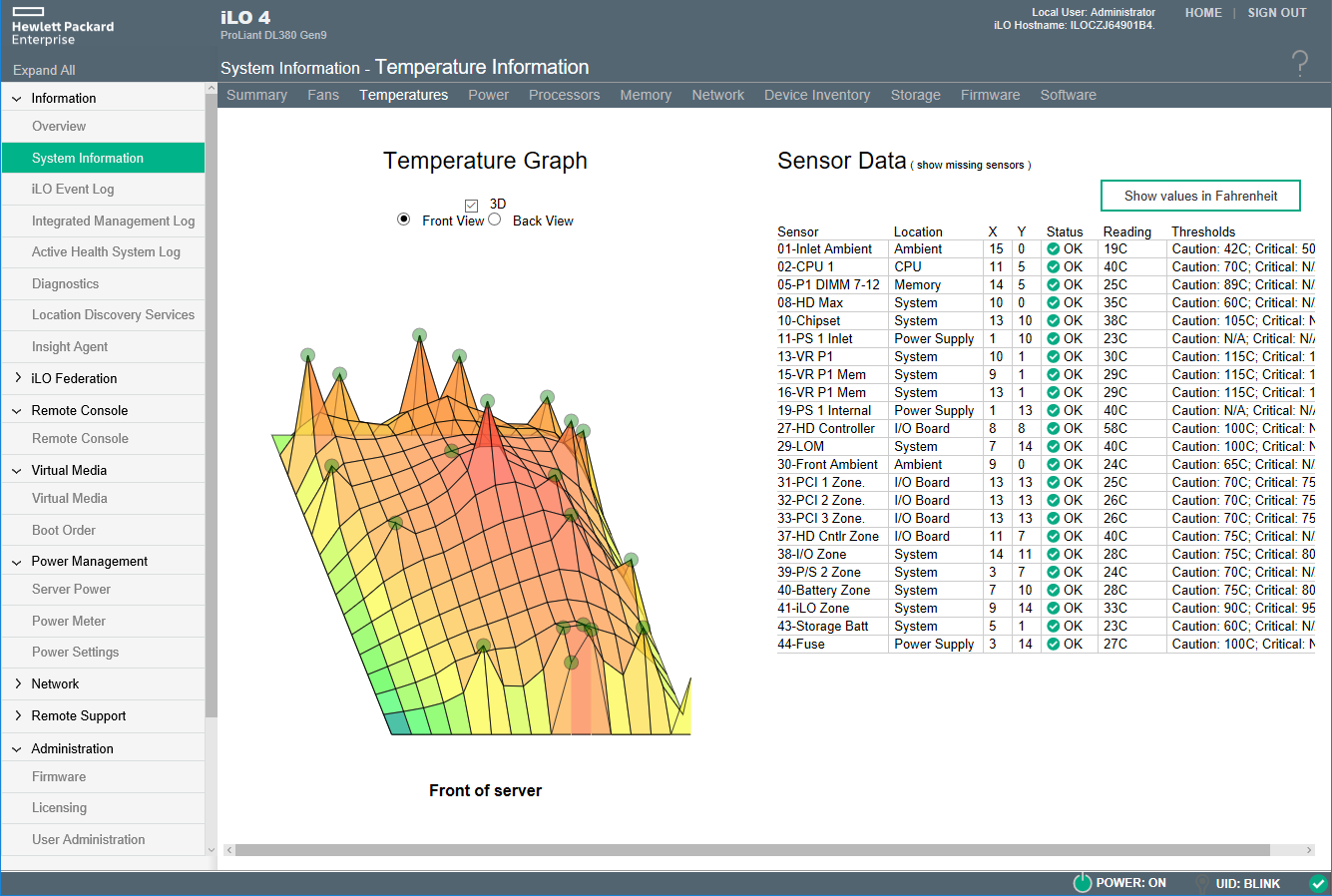
Networking and power
All models come with quad embedded Gigabit ports and you can upgrade with a choice selection of FlexibleLOM mezzanine cards. The server supports one card which fits in a dedicated slot at the rear of the motherboard and HPE offers dual and quad-port fibre or copper 10GbE plus a dual-port 10/25GbE card.
There's plenty of room for standard expansion cards with a single 3-slot riser included plus space alongside for a second optional 3-slot riser. HPE's tool free design comes into play as the risers can be easily removed with just a flick of the wrist.
Our system includes a single 500W PSU with room for a second. Power consumption is commendably low with the server drawing only 39W in idle and peaking at 81W under extreme load.
HPE offers 800W and 1400W PSUs and a new addition is a Flexible Slot Battery Backup Module. Costing around 300, this turns one power bay into an internal UPS that provides 750W of power for 60 seconds to ensure a safe shutdown in the event of a blackout.
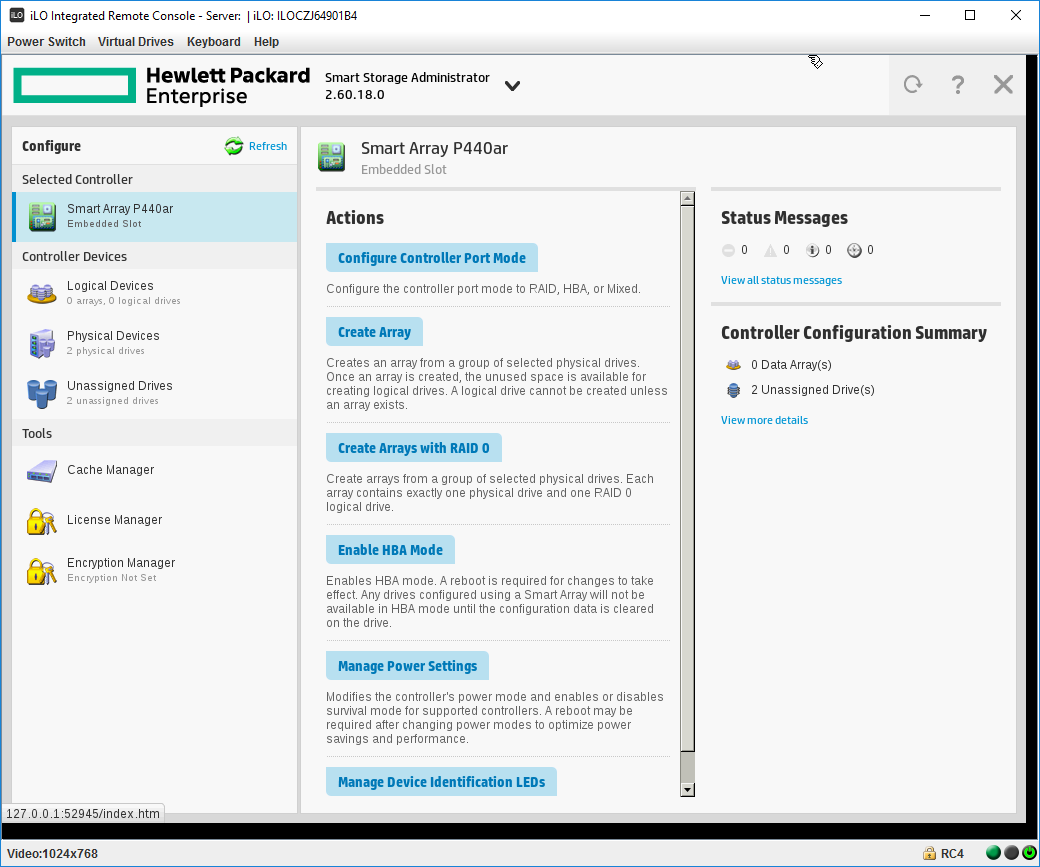
The management
The embedded iLO4 controller gets a web interface refresh making it even easier to use and capable of providing a wealth of information on hardware components. It links up with HPE support for fault reporting and its Federation view manages multiple servers from a single system.
With HPE's iLO4 iOS app on our iPad, we could access the same information on the move. Software deployment is also a cinch as HPE's Intelligent Provisioning took our OS installation disk and had Windows Server 2012 R2 loaded inside 20 minutes.
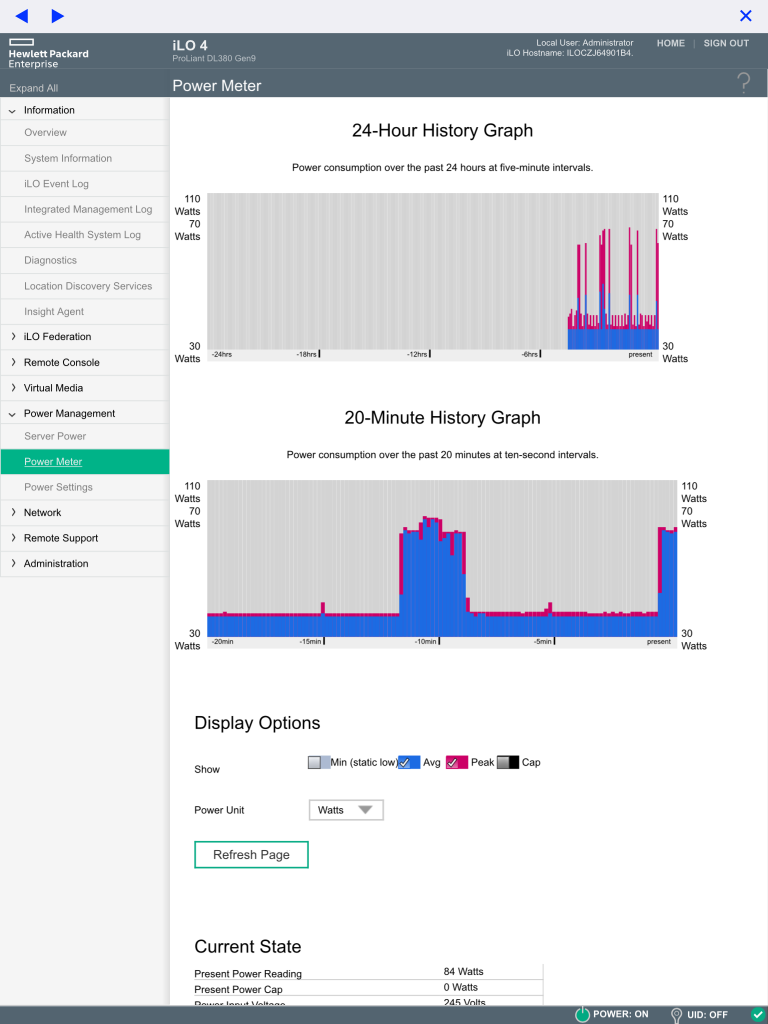
We used the iLO4 iOS app to remotely monitor our server's power consumption
HPE's OneView provides a single view of all managed servers, storage networks and virtualized environments. We imported the predefined OneView VM into our Hyper-V lab system and after declaring the server's iLO4, were able to view installed hardware, check firmware versions, control power, run remote control and monitor graphs of CPU and power usage plus temperatures.
The free OneView Standard license enables system monitoring while managing them requires an Advanced license. This opens up a wealth of software defined resources such as profiles for provisioning servers, automatically configuring RAID adapters and logical volumes, maintaining firmware consistency and setting the preferred boot mode
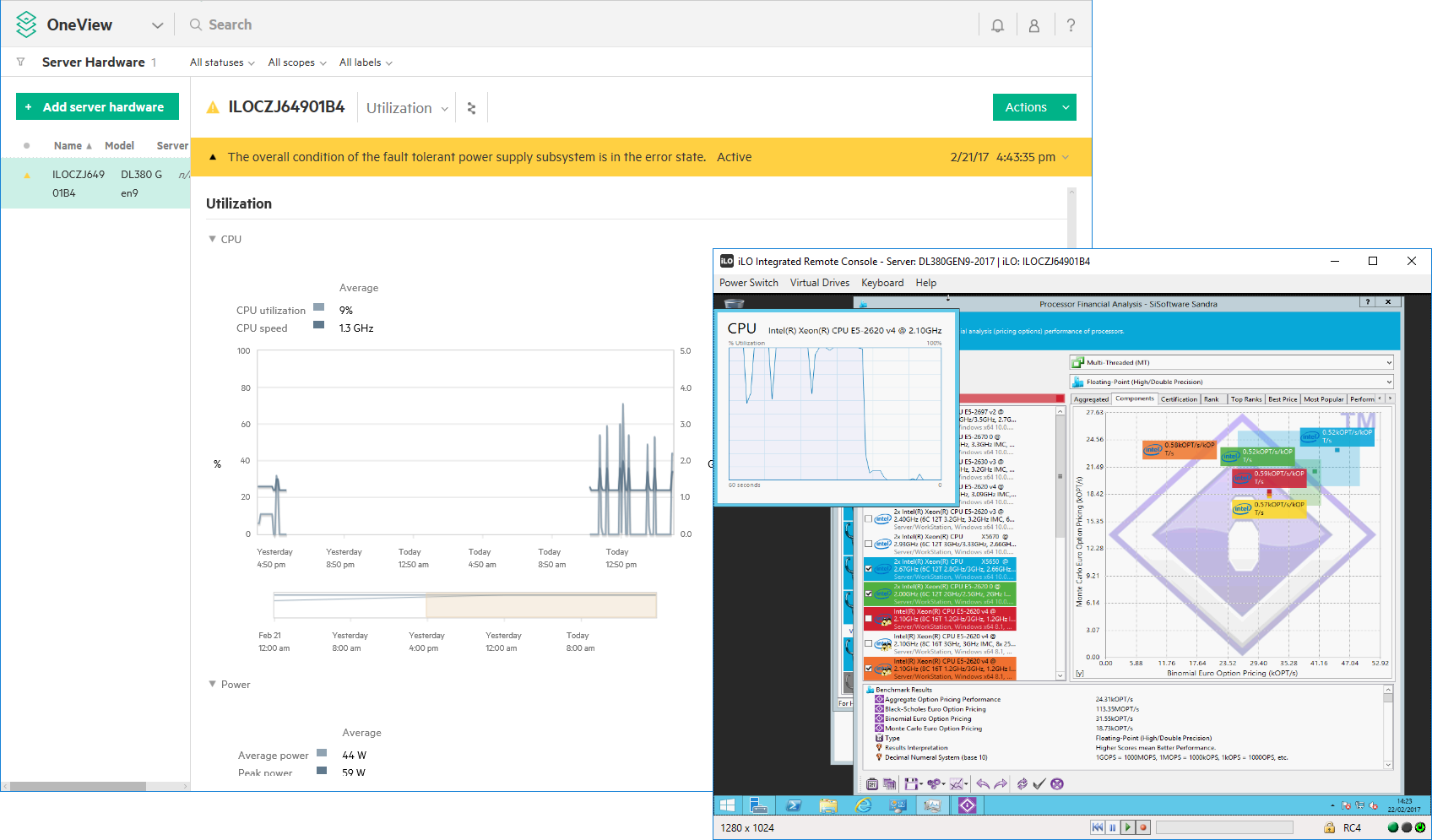
Conclusion
Along with many other systems, we use ProLiant DL380 Gen9 servers in the lab for testing and over a period of nearly three years have found them to be a solid investment capable of putting up with a lot of punishment.
The latest models deliver a remarkable range of new features so if you want the most capable, versatile and scalable 2U rack server on the market then look no further.
Verdict
Features, performance, storage options, scalability and management – HPE’s ProLiant DL380 Gen9 has it all and is a great value general purpose server
(As reviewed)
Chassis: 2U rack
CPU: 2.1GHz E5-2620 v4 Xeon (max 2)
Memory: 16GB DDR4 2,133MHz 1.2V (max 3TB with LRDIMMs)
Drive bays: 8 x hot-plug SFF (max 26)
Storage: No HDDs included as standard
RAID: HPE Smart Array P440ar 12Gbps SAS/2GB DDR3 FBWC/BBU
Array support: RAID0, 1, 10, 5, 50, 6, 60
Expansion: 3 x PCI-e Gen3 slots (max 6 with 2 risers)
Network: 4 x embedded Gigabit
Other: FlexibleLOM, internal USB 2 (2), SD card slot
Power: 1 x 500W hot-plug PSU (max 2)
Management: HPE iLO4 Standard with Gigabit
Warranty: 3yrs on-site NBD
Get the ITPro daily newsletter
Sign up today and you will receive a free copy of our Future Focus 2025 report - the leading guidance on AI, cybersecurity and other IT challenges as per 700+ senior executives
Dave is an IT consultant and freelance journalist specialising in hands-on reviews of computer networking products covering all market sectors from small businesses to enterprises. Founder of Binary Testing Ltd – the UK’s premier independent network testing laboratory - Dave has over 45 years of experience in the IT industry.
Dave has produced many thousands of in-depth business networking product reviews from his lab which have been reproduced globally. Writing for ITPro and its sister title, PC Pro, he covers all areas of business IT infrastructure, including servers, storage, network security, data protection, cloud, infrastructure and services.
-
 ‘Phishing kits are a force multiplier': Cheap cyber crime kits can be bought on the dark web for less than $25 – and experts warn it’s lowering the barrier of entry for amateur hackers
‘Phishing kits are a force multiplier': Cheap cyber crime kits can be bought on the dark web for less than $25 – and experts warn it’s lowering the barrier of entry for amateur hackersNews Research from NordVPN shows phishing kits are now widely available on the dark web and via messaging apps like Telegram, and are often selling for less than $25.
By Emma Woollacott Published
-
 Redis unveils new tools for developers working on AI applications
Redis unveils new tools for developers working on AI applicationsNews Redis has announced new tools aimed at making it easier for AI developers to build applications and optimize large language model (LLM) outputs.
By Ross Kelly Published
-
 Google layoffs continue with "hundreds" cut from Chrome, Android, and Pixel teams
Google layoffs continue with "hundreds" cut from Chrome, Android, and Pixel teamsNews The tech giant's efficiency drive enters a third year with devices teams the latest target
By Bobby Hellard Published